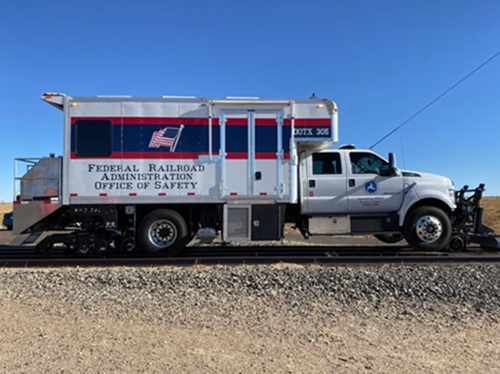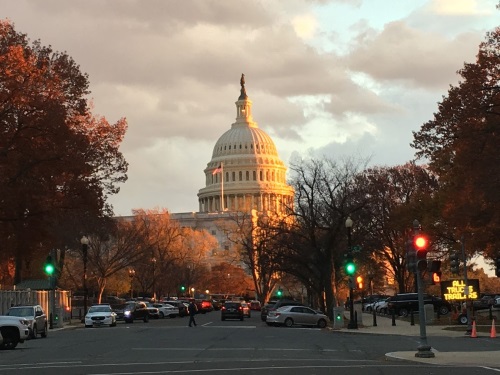The leadership of the House of Representatives Committee on Transportation and Infrastructure has asked the Government Accountability Office to study the safety implications of the Federal Communications Commission plan to open up more than half of the 5.9-gigahertz wireless communication spectrum to non-transportation safety usage.

The FCC proposal would shift 30 megahertz of the 75 megahertz reserved for dedicated short-range communications or DSRC to help enable a different form of automotive communications technology called Cellular Vehicle-to-Everything or C-V2X, while shifting the other 45 megahertz to Wi-Fi use. The FCC currently plans to vote on its reallocation plan November 18.
In a letter sent to GAO Comptroller General Gene Dodaro on October 30, House T&I Committee Chairman Peter DeFazio, D-Ore and Ranking Member Sam Graves, R-Mo., said that the FCC’s plan “may significantly affect the efficacy of current and future applications of vehicle safety technologies.”

“In December 2019 – against guidance from Secretary of Transportation Elaine Chao – the FCC proposed to reallocate more than half of the 5.9 GHz radio frequency or safety band to unlicensed operations, such as Wi-Fi,” they said in their letter. “Advanced transportation technologies have the potential to revolutionize our transportation system, but the safety and effectiveness of those technologies will depend on the amount of spectrum available on the safety band.”
Reps. DeFazio and Graves asked the GAO to answer six questions regarding the FCC’s 5.9 GHz reallocation plan, including what effect of “spectrum sharing” could have on “the efficacy, including safety, of current wireless technology transportation deployments.”
Meanwhile, the Mid America Association of State Transportation Officials or MAASTO urged the FCC to reconsider its plan, calling on the agency to “preserve a broadcast band currently devoted to transportation safety” instead of converting it to Wi-Fi use.

“As connected and automated vehicles come on line, this broadcast spectrum will be vital to keep both motorists and pedestrians safe,” explained Craig Thompson, MAASTO’s president and secretary of the Wisconsin Department of Transportation, in a statement.
“Industry is already developing technology that will use this band for safety applications,” he added. “Diverting it to Wi-Fi won’t have much of an impact on Wi-Fi availability, but it may very well end up in unnecessary injury and death.”
Other members of MAASTO – representing Wisconsin, Illinois, Indiana, Iowa, Kansas, Kentucky, Michigan, Minnesota, Missouri, and Ohio– also called upon the FCC to change course on its 5.9 GHz realignment plan.

“We are disappointed that the FCC has decided to take this action at a time when the development of connected autonomous vehicle {CAV] technology is being advanced for public safety,” said Paul Ajegba, director of the Michigan Department of Transportation.
“The Ohio Department of Transportation strongly supports U.S. Secretary of Transportation Elaine Chao’s position that the 5.9 GHz spectrum should continue to be preserved for transportation safety technology,” emphasized Jack Marchbanks, director of the Ohio Department of Transportation.
“In the Buckeye State, we are ready to deploy 5.9 GHz-linked CAV technology along a 35-mile stretch of US 33 for the express purpose of making our roadways safer for motorists and pedestrians,” he added. “If the utilization of the 5.9 GHz spectrum in transportation infrastructure can help save one life in Ohio or anywhere in the nation, it will be more than worth holding it from auction.”
Jim Tymon, AASHTO’s executive director, made many of the same points in several missives for more than a year to the FCC, Congress, and even the White House.

He added that all 50 of AASHTO’s state departments of transportation members – along with the District of Columbia and Puerto Rico – signed a letter sent to the FCC in August 2019 to “continue our nation’s commitment to improving transportation safety” by reserving the 5.9 GHz wireless spectrum for transportation-only usage.
“The 5.9 GHz band has been part of the spectrum that has been reserved for use for life-saving transportation technologies,” Tymon emphasized.
“At a time when we are trying to get to zero traffic fatalities, the FCC should stay the course and not give up the spectrum that the transportation community has been counting on – and has already made considerable investments in – to help save lives,” he said.
 Top Stories
Top Stories
State DOTs Making Preparations for Wintertime Operations
December 12, 2025 Top Stories
Top Stories

